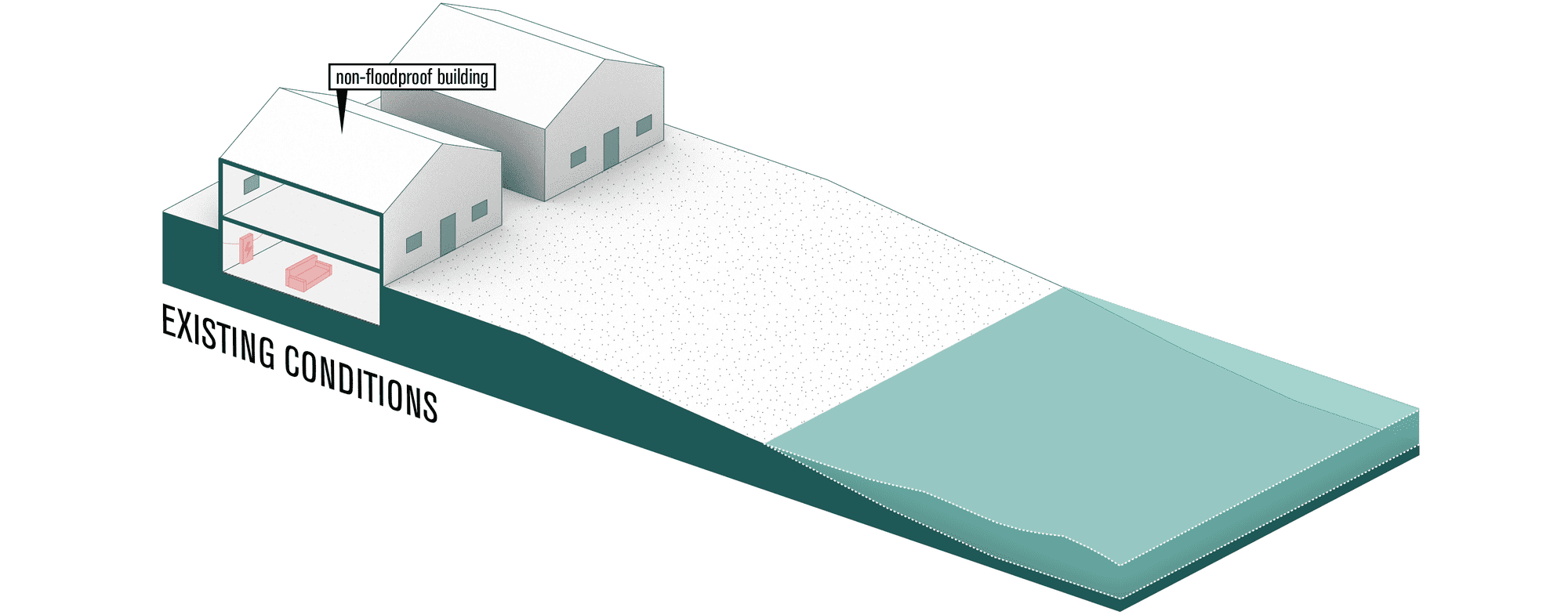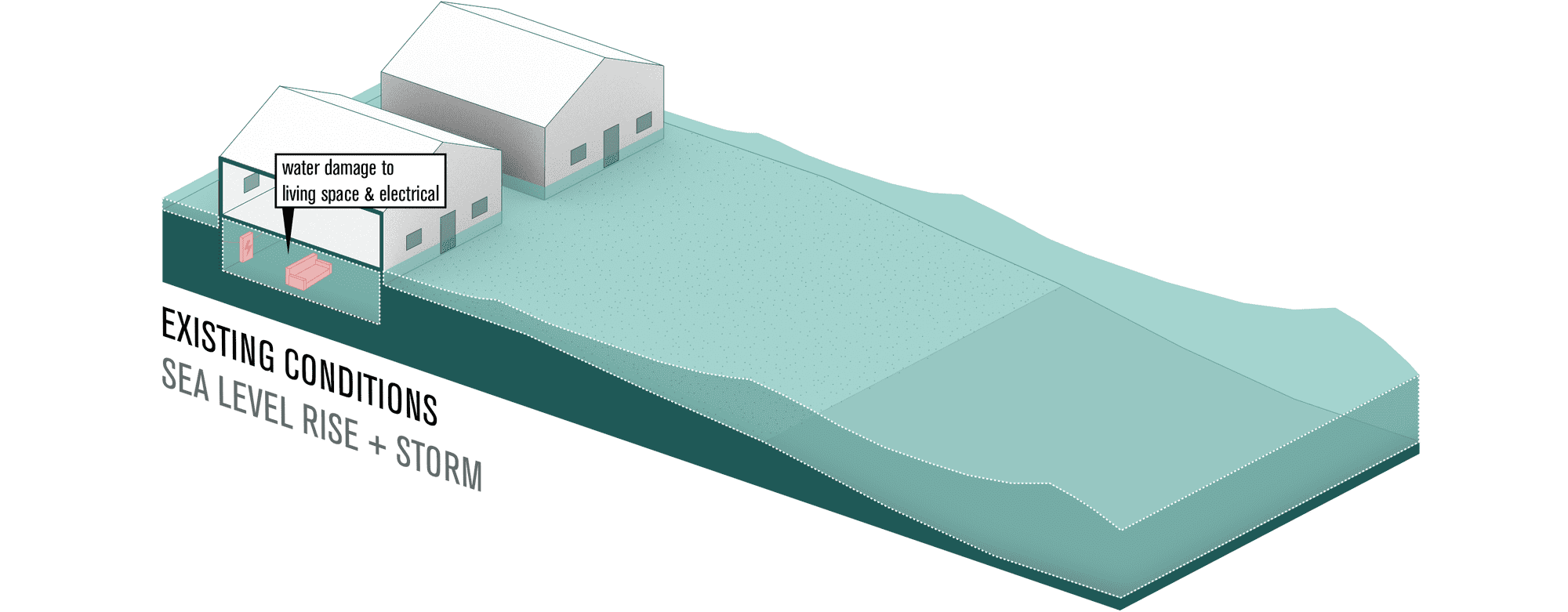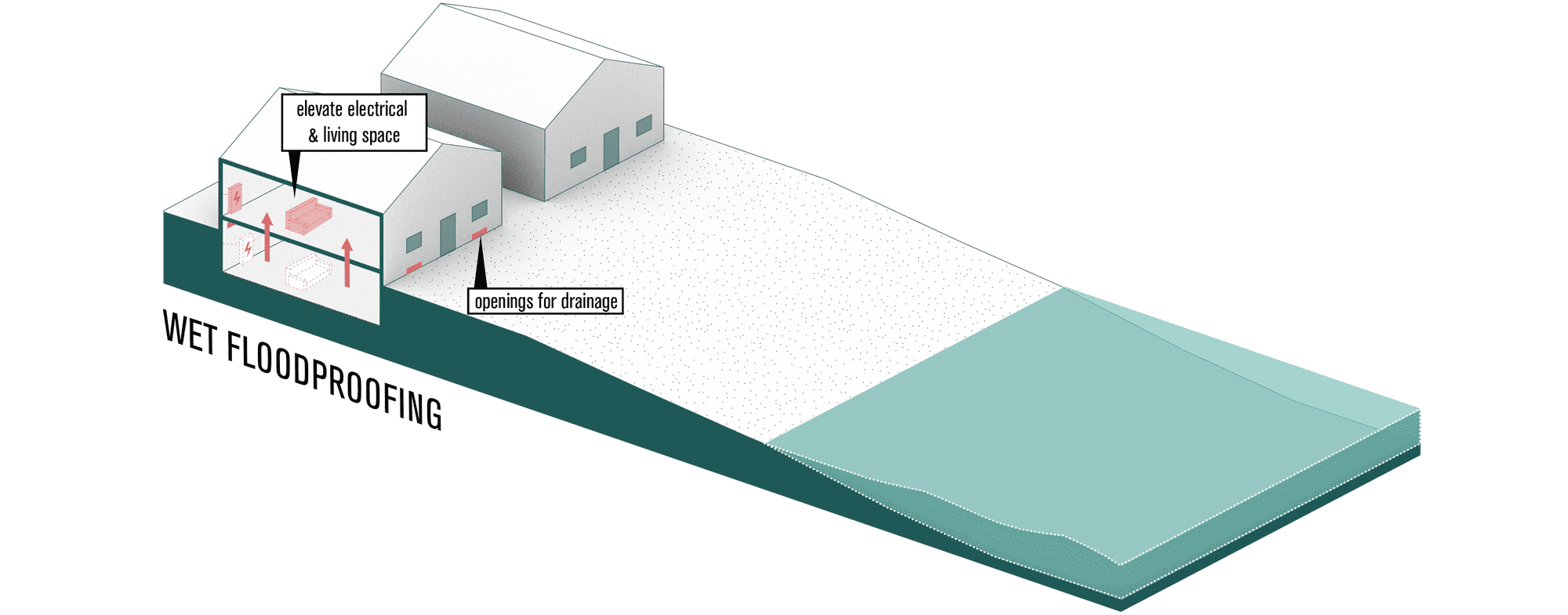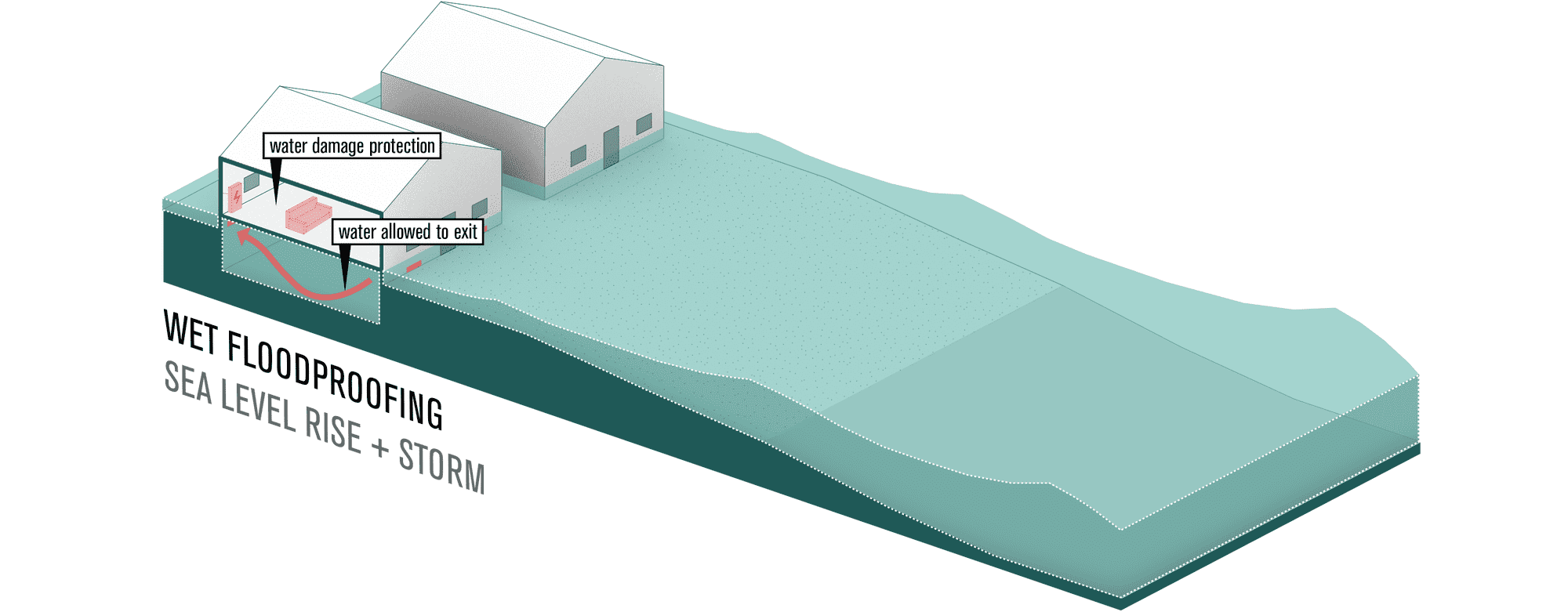Adaptation Strategy: Wet Floodproofing
Wet floodproofing is the measure of allowing water to enter and exit a structure with minimal or no damage. Wet floodproofing includes a suite of measures including the use of flood-resistant materials, below the Base Flood Elevation (BFE), elevation of electrical and mechanical services, openings that allow drainage from the inside of the building to the outside, and breakaway walls. The applicability of wet floodproofing is limited, however, in small residential properties, it can be a viable alternative compared to elevation.1 The strategic placement of openings allows for the equalization of hydrostatic pressure so that water can flow in and out.2
How it works
Types of wet floodproofing
- Flood vents allow water into a building to enable the equalization of the interior and exterior hydrostatic pressures. This significantly reduces the likelihood of wall failures and structural damage.
- Protection of service equipment involves moving utilities and appliances to areas in a building that are higher than the level of flood protection. Equipment and appliances may be moved to areas such as attics or utility rooms.
- Anchoring involves securing foundations, fuel tanks, equipment, and other components that are located below the level of flood protection. This helps to prevent flotation, collapse, and lateral movement of equipment during a flood.
- Flood resistant materials refer to replacing building materials in flood-prone parts of a structure with materials that are resistant to flood damage. For example, carpet and paneling, and gypsum wallboard can be replaced with materials that require cleaning rather than replacing. 9
Benefits
- Leads to a reduction in clean-up time and cost.
- Often less costly than other flood mitigation or adaptation measures.
- Installation of flood vents, allow for the equalization of internal and external hydrostatic pressures thereby decreasing loads on the walls and floors of a building. 10
- Except for basement contents, relocating or storing costs after a flood warning are normally covered by flood insurance. 9
Challenges
- A building may be uninhabitable during a flood event, hence, alternative accommodation must be sought
- If the inside of a structure becomes contaminated by sewage and other substances in floodwater, extensive cleanup may be necessary
- Does not reduce possible damage from high-velocity floodwater flow or wave action
- May not result in a reduction in premiums for flood insurance 9
Example projects
Spray-and-wash Basement
Calgary AB, Canada
In Calgary, homeowners renovate their basements with flood-resistant materials. The renovation required the existing basement to be gutted and replaced with materials such as steel stairs, polished concrete floors, and walls that are impervious to water.7 The renovation materials cost about 30 percent more than the conventional building materials.8 The use of water-resistant material allows for post-flood cleanup to be much faster and less costly.
The National Flood Insurance Programme
USA
The National Flood Insurance Programme (NFIP) guarantees flood insurance to communities that regulate and ensure that floodplain development meets certain criteria.3 One of the criterion that the NFIP requires is that all new non-residential developments are flood-proofed.4 The design of a building that is below flood elevation must have watertight walls, structural components that can resist hydrostatic and hydrodynamic loads, and utilities that are protected from flood damage.5 Also, NFIP requires that flood-resistant materials must be used in parts of the build that are exposed to floodwater.6
Citations
-
1.
↑
The Arlington Group Planning Architecture Inc., et al. Sea Level Rise Adaptation Primer. pp. 71. https://www2.gov.bc.ca/assets/gov/environment/climate-change/adaptation/resources/slr-primer.pdf
-
2.
↑
FEMA. Homeowner's Guide to Retrofitting. https://www.fema.gov/pdf/rebuild/mat/sec6.pdf.
-
3.
↑
Zhu, Xianli, et al. Technologies for Climate Change Adaptation - Coastal Erosion and Flooding. 2010, pp. 75. https://orbit.dtu.dk/files/5699563/Technologies for Climate Change Adaptation-Coastal Erosion and Flooding.pdf.
-
4.
↑
Ibid, 75.
-
5.
↑
Ibid, 75.
-
6.
↑
Ibid, 75.
-
7.
↑
“Flood-Wary Homeowner Installs 'Spray-and-Wash' Basement’.” CBCnews, CBC/Radio Canada, 20 Mar. 2014, https://www.cbc.ca/news/canada/calgary/flood-wary-homeowner-installs-spray-and-wash-basement-1.2579866.
-
8.
↑
Ibid.
-
9.
↑
Southern Tier Central Regional Planning and Development Board (2019). Wet Floodproofing. http://www.stcplanning.org/usr/Program_Areas/Flood_Mitigation/Floodproofing/FProof_05_Wet_Floodproof.pdf
-
10.
↑
Anonymous. (n.d.). CHAPTER 6 – WET FLOODPROOFING. https://www.fema.gov/media-library-data/20130726-1608-20490-7205/fema551_ch_06.pdf
-
i1.
↑
Figure 1 and 2. Anonymous. (n.d.). CHAPTER 6 – WET FLOODPROOFING.https://www.fema.gov/media-library-data/20130726-1608-20490-7205/fema551_ch_06.pdf



